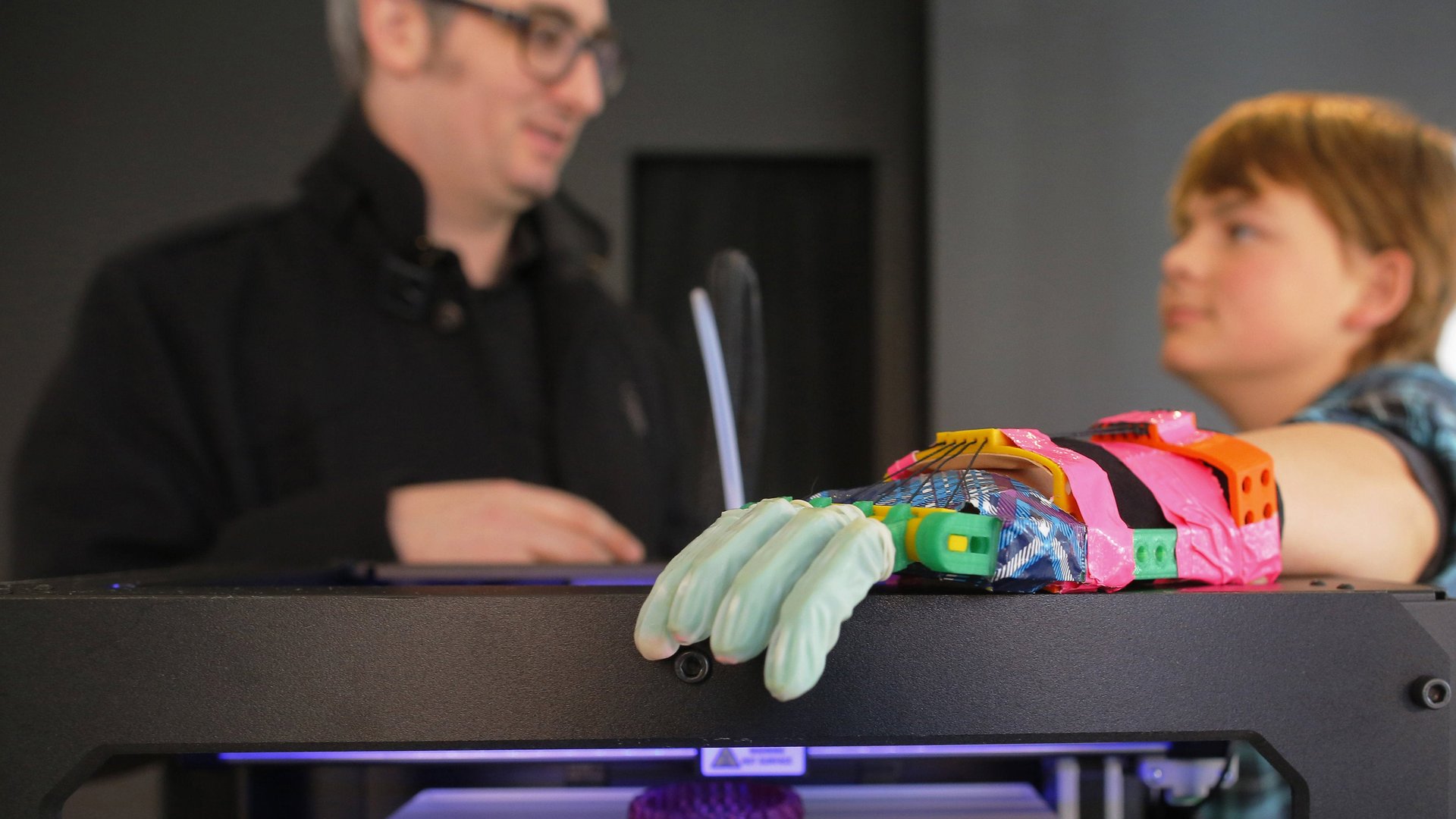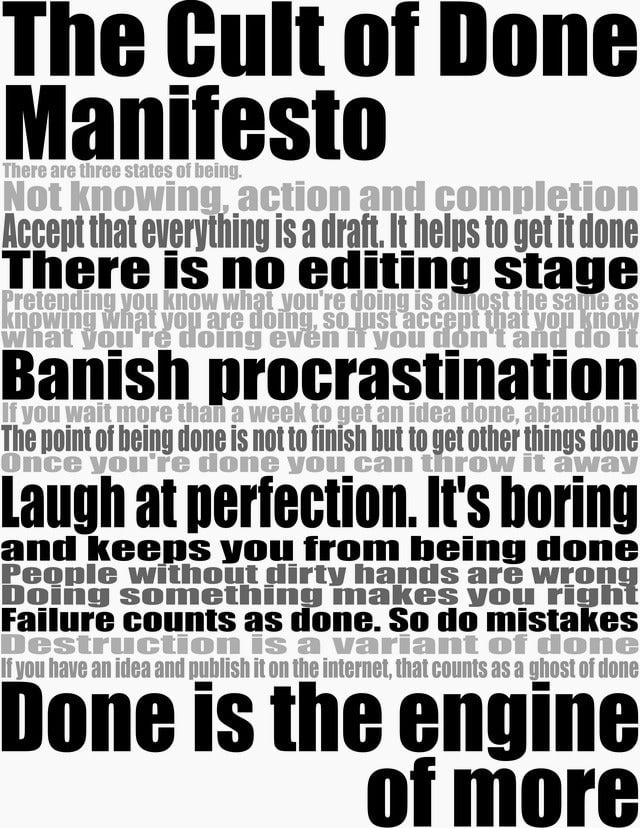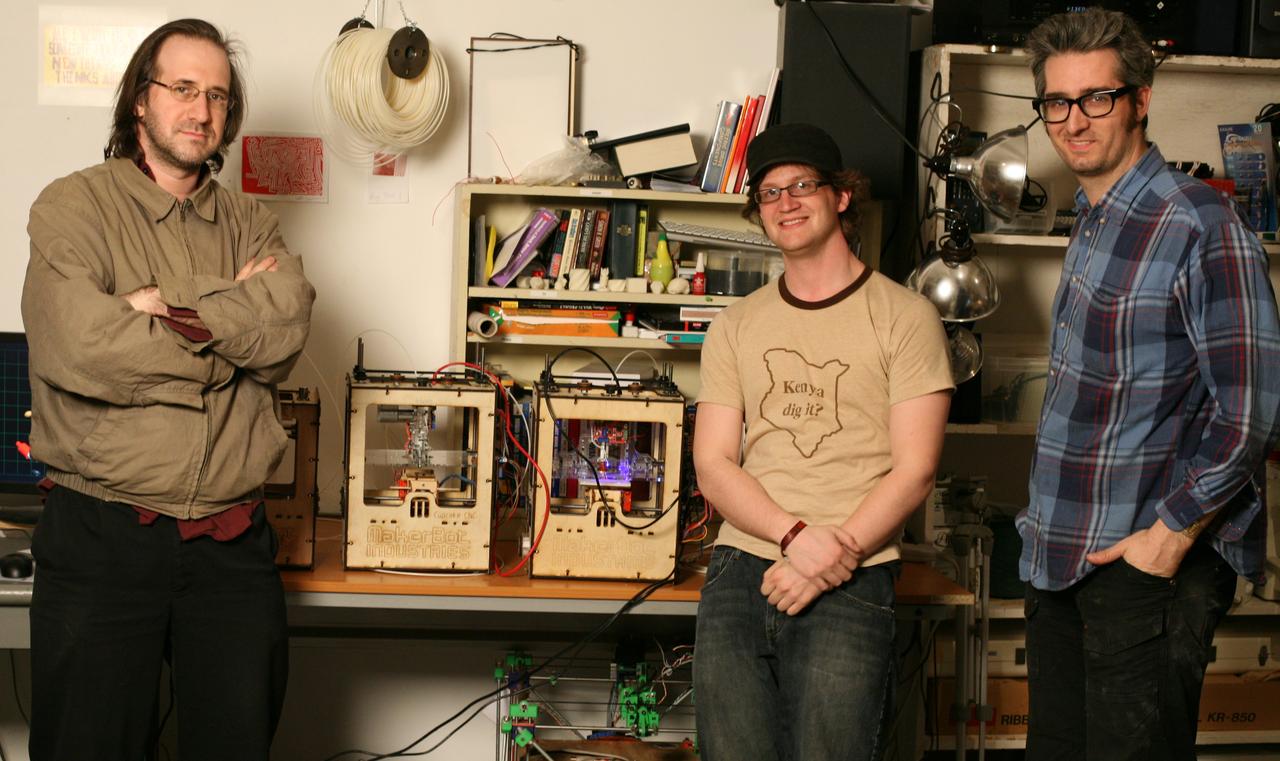The man behind MakerBot on finding the stories that build your brand
When he started MakerBot in 2009, founder Bre Pettis came across a lot of savvy people who simply didn’t believe there would ever be a market for desktop 3D printing. In fairness, he had practically invented the term himself. But just six years later, MarkerBots have found their way into thousands of homes, schools, startups and even Fortune 50 juggernauts.


When he started MakerBot in 2009, founder Bre Pettis came across a lot of savvy people who simply didn’t believe there would ever be a market for desktop 3D printing. In fairness, he had practically invented the term himself. But just six years later, MarkerBots have found their way into thousands of homes, schools, startups and even Fortune 50 juggernauts.
What flipped the switch? Pettis, a former art teacher, points to how much time he spent telling stories about MakerBots and the people who love them. He told stories to customers, investors, prospective employees, and many other audiences—all with one goal in mind: To spotlight the impact he knew the products had on real people.
He talked about a hospital that saved $60 thousand in a quarter printing its own supplies; startup founders free to iterate at the speed of thought in their own space; an elementary school student who commandeered his teacher’s printer to make himself a prosthetic hand.
There’s power in a good story. And it’s power that any founder can and should wield. In this exclusive interview, Pettis shares lessons he learned from years of startup storytelling—how to craft a foundational narrative, what makes content intrinsically shareable, and why traditional media coverage is more attainable than you think.
Find your manifesto
A startup’s story needs to be a shapeshifter. You need a version that will convince people to give you money, another to persuade star talent to join your team, another for those first customers taking a chance on you. These stories live in different places and have different purposes. One may never be written down, one may only be emailed to select people, one may live at the top of your website in the form of a video. But they should all stem from the same core.
In order to get any of these versions right, you need to start by identifying this central narrative, Pettis says. Why do you do what you do? Why does it solve an important problem? What change will it make possible? Why is your product the one to watch?
You need to really consciously set up the way you’re going to be in the world.
This doesn’t mean locking yourself in a room away from the world until you’ve got something bulletproof. “You can get really good at telling your story through networking,” he says. In MakerBot’s early days, he would spend nearly every night out at events talking to people about what the company was doing and why—over and over and over again. He didn’t just recite the same thing either. He paid close attention to the points that seemed to resonate most. Eventually, they became the skeleton of his narrative.
Pettis is a big advocate for establishing what he calls ‘rules’ right from the get-go. You might also call them values or tenets, but they’re essentially statements of what you believe in and care about. And you should get them down on paper.
“Right as I was starting MaketBot, I co-created the ‘Cult of Done Manifesto‘ with Kio Stark. Later, when we were getting ready to sell the company, we created ‘The MakerBot Way‘ to really distill what the company was and how to stay true to that,” he says. Your brand vocabulary may evolve as you grow, and product descriptions are almost certain to change. But these touchstones that remind you of your early convictions and intentions will help you shape stories that consistently reflect the very best of your brand.
The Cult of Done Manifesto resonated so much, that MakerBot fans actually produced art and posters relaying its points. Here’s one:

And The MakerBot Way continues to live on the company’s website in the form of its own easy to grok infographic:

Perhaps not surprisingly for a former art instructor, Pettis compares this rule-setting exercise to painting from a palette. “When you use only five colors instead of a thousand, you can mix those colors and do amazing things,” he says. “Giving yourself limitations focuses you on what’s important and makes everything you put out there connected and coherent.” When it comes to your startup, identifying the principles you hold most dear will make the stories you tell more authentic.
Create a manifesto that captures your approach to kicking butt in the world.
This is a critical step to developing branding that truly moves people. “Branding is really the result of boiling down what you’re doing into its core messaging and then repeating that messaging in very truthful and straightforward ways,” Pettis says. Your branding should be reflected in every story you share, through video, press releases, or even tweets.
In MarketBot’s case, every product goes through a rigorous branding process for a year or two before it’s launched. At the end of it, everyone in the company knows the precise phrases to use to describe it that not only highlight its strengths but also how it fits into the company’s broader 3D printing movement. “Each of these product profiles gives us the language to tell stories. We use the same phrases again and again for ourselves and our customers. Who we are and what we’re trying to do in a bigger sense.”
For example, the company showcases its products on its website by “generations,” making the point that the technology has been continually revised and improved as the team has learned more about 3D printers and how people use them. This is the underpinning of how they talk about the MakerBot Replicator (and its mini version). It’s just as much about the company’s historical commitment to iteration as it is about product features.
The goal is for you and your customer to share the same understanding of your company. This is a rare achievement for most brands, even the big ones. “Good branding creates a mind meld with your customers so that you’re giving them what they actually want, and they know exactly what to expect from you,” Pettis says.
It also creates the same mind meld within your organization—which is a very important byproduct. Pettis has found that MakerBot’s immersive branding workshops are extremely valuable tools for getting everyone aligned and excited internally. For these workshops, everyone in the company who touches or may talk about a product convenes to actively brainstorm and nail down the words and phrases that will be reused and recycled to promote, sell and describe it.
To present a united front, you need every member of your team to understand your brand just as well as they can memorize product specs. With this in mind, startups can turn key milestones like product launches into opportunities to get everyone on the same page about mission, vision, and what to share publicly.
“What you say is important,” Pettis says. “Equally important is that your team is saying the same thing and you all agree on what’s special enough to share.” Involving a lot of people in the process can slow things down for sure, but it also filters out stories that don’t have that strong, emotional pull that they need to influence a market.
Don’t tell stories just to tell them
Once you’ve nailed down your meta-narrative that powers your work and convinces the right people, it’s time to start having fun. You get to tell stories that will change the way people look at something. This is what a good story does—it transforms people. They start reading something or watching something feeling one way, and in a minute or less, they themselves are different. Make this your goal for everything you put out, Pettis says. He has pointers that he’s picked up over the years that make this possible:
Put your enthusiasm to work
“It’s human nature: When you hear someone getting excited about something, you want to be excited about it too,” Pettis says. Above all else, your stories need to reflect your extreme passion for solving the problem at hand and the virtues of your product. People have to know you’re in it because you have absolute confidence that you’re doing something great. Being able to communicate this in not just words, but your overall tone and disposition, is an incredible asset. Emphatically don’t play it cool.
A huge source of this enthusiasm is the founder’s personal story. It’s a key element of every startup’s narrative, but you can position it to lend even more weight to the case you’re making for the company. Founders don’t just come up with an idea and find a market, they establish the culture and character for the organization. For better or worse, it becomes an extension of who they are and what they value.
MakerBot, for instance, is all about inspiring and enabling people to unlock their creativity. Early on, this was reflected in a very personal story that Pettis openly shared. “I’ve been a puppeteer, an artist, a videographer, a design geek,” he says. “So at the beginning, the story was really just about me, my co-founders, a laser-cutter and a vision. Now that narrative is much much bigger and less personal. It changed as we grew, and now it’s about manufacturing in America, speeding up innovation, etc. But at any size, we still tell the bulk of our stories about helping individuals do wonderful things.”

Founders blazing trails in brand new markets will face the added challenge and benefit of crafting a story not just about their company but about an entire field opening up in front of them.
When you’re pioneering something, there’s no predictive model.
If you have to explain what a radical new product is, retelling stories that convey vision and real experiences tend to be even more meaningful than facts and figures. This is something startups should keep in mind when they’re trying to land that first round of funding or initial talent. “Not very many startups get the chance to own their industry’s conversation,” says Pettis. “If you’re one of them, make the most of it.”
Delight yourself first
“We’ve always tried to have fun with the branding assets and stories we put out there, every time we show what the technology does. I used to do a video myself every week and it was only fun if we were doing something new and unique and actively innovating.”
As far as Pettis is concerned, videos of cats chasing lasers are not off the table if they’ll get people to watch. Your first audience is yourself and your immediate team. If you’re creating something that doesn’t entertain you while you’re making it, you’re probably on the wrong track. It might seem subjective, but you need to be having fun in order to enchant, delight, and surprise your audience. The emotion either comes through or it falls flat. Trust your taste.
Keep in mind also that you’re not restricted to blog posts, videos and social media. Those formats are great, and they’ll likely do the bulk of the narrative work for your brand, but there aren’t any hard limits on what storytelling is.
“During our fundraising rounds, we would go into meetings and dump a big bag of 3D printed parts on the table. It was a cornucopia of stuff, and we would tell the history and capability of MakerBot through the objects right in front of us,” Pettis says. For MakerBot, the products of its product were a thrilling and tactile testament of their potential. They were attention grabbing but also got to the heart of the company’s purpose. As long as your message comes through clear and strong, don’t be afraid to play around with different mediums.
Use scrappiness to your advantage
There’s a long tradition (and industry-wide value) of startups maximizing extremely scarce resources. When it comes to telling authentic stories, this can actually be an advantage instead of a constraint. “I came in with real commitment to a particular aesthetic for MakerBot,” Pettis says. “I was personally obsessed with taking pictures and videos, and we ended up using all of that in our customer-facing materials.”
You definitely want to make everything you produce as good as it can be—but there’s something to be said about it coming from you and carrying your style. When you develop and execute an aesthetic with in-house talent out of need, you have a better chance of landing on something that really shows the character of your company and the people who love it. In MakerBot’s case, the marketing assets Pettis created really worked with fans and buyers.
The moral: If you or someone on your early team has a skill to offer, even if it’s at the amateur level, capitalize on it. Give them what they need to get even better, especially if it’s something they love doing that will connect them even more to the brand. It doesn’t matter what people’s job descriptions are in this case. Don’t refuse help. See where it goes.
Share wisely
Pettis has seen both sides of sharing. On one hand looking back, he wishes MakerBot had given its users a glimpse into their development pipeline earlier. “We’ve developed some really cool stuff and then told nobody about it because we abandoned it,” he says. “I wish, just for bragging rights, that we’d shared some of that intermediate stuff and how we made those decisions and how it helped us get to where we are now.”
On the other hand, he’s also seen how radical transparency can swing too far the other way. “For a while, we tried to have this super utopian business model that was probably more befitting of nonprofits, where we just shared absolutely everything we were working on.” One of those things was a rough sketch for a second 3D printer model. The good news? Word spread like wildfire among MakerBot fans who were immediately sold. The bad news? Everyone stopped buying the first generation printer to wait for the latest and greatest—which was still a year away.
“We got through it somehow, but we definitely shot ourselves in the foot that time,” Pettis says. “And you can only shoot yourself in the foot so many times before you can’t walk anymore.”
So where does he land on sharing today? Don’t hesitate to reveal the inner-workings of your decision-making process if it would strengthen your dialogue with customers. When it comes to business plans and unreleased products, however, think (and then think again) about potential fallout. Once a story is out in the wild, there’s no getting it back.
Keep an eye out for flashes of brilliance
About a year into the company’s life, Pettis says something remarkable occurred. “It happened. We had been waiting for it and the moment arrived: Someone used a MakerBot to make another MakerBot.” Of course, this made for an incredibly compelling story about the power of the technology and how it was going to completely change the way things get made in the future. But there was no way to orchestrate it without it seeming contrived. It had to happen organically and get noticed.
Often the greatest stories only happen because you’ve kept your eyes peeled for organic moments of ‘cool.’ This requires sophisticated listening mechanisms and channels for your customers to communicate with you. Beyond that, you need tools and a process in place for going out and capturing them once they’re spotted. This could include people poised and ready to interview users at the drop of a hat, or a protocol for pushing things out to your audience.
When people do something utterly new with your product—that’s what you need to find and amplify.
For MakerBot, surfacing stories about awe-inspiring things users are doing is a key business priority. Where one founder’s passionate voice is a powerful asset, you become exponentially more powerful when you add the voices of a growing pool of believers. You have to let them speak for themselves.
This is why the company has invested so much in what it calls MakerBot Stories, a series of videos showcasing its printers’ most innovative and intriguing real-world applications. “This is a very important part of what we do at MakerBot,” says Pettis. “We really want to help our customers shine and be superstars in the world. When we show them doing amazing things, we get to go along for the ride while highlighting exactly how amazing they are.”

The series has a secondary benefit: It lets the company explain various use cases for its products, too. “So many people think, ‘Oh, 3D printing, that’s cool, but what would I ever do with it?’ When people like this see what others just like them are doing with these tools, it’s empowering. Suddenly they think things like, ‘Wow, that company I’ve wanted to start forever but thought it was impossible? I need to stop making excuses. I can do it myself.’”
Everyone on the MakerBot team has the directive to root out these types of opportunities. Sometimes inspiring tales of creativity originate on expected channels, like the company’s Thingiverse website where users can share downloadable 3D models and designs. But more often, Pettis says, they start with a salesperson who sold a printer and heard back from the customer; or someone on the support team who—in solving a user’s problem—realized there was more to the story.
“Our support department is filled with these superhuman experts,” he says. “People will call up with a problem and when a rep digs deeper about what they’re trying to do and what’s going on, they’ll discover this amazing boundary-pushing project that we should be sharing with our entire community.”
Just get started
Now that corporate storytelling is more of a known quantity—with more companies launching with blogs and social media strategies already in place—there’s a lot of room to overcomplicate things and intimidate yourself out of doing it right. Don’t let this happen, Pettis says.
We’ve found that traditional storytelling doesn’t do well at all compared to real, true stories. Don’t wait to see this for yourself. Just try things.
For beginners, there’s an ever-evolving landscape of free, easily-accessible marketing tools at their disposal. Where to start? Pettis says use all of them. “Really, you have to be everywhere (especially if you’re consumer-facing),” he says. “Tell the same story in lots of different places and see where people learn about you and come from.” He recommends covering your bases with Facebook, Twitter, Pinterest, YouTube and Vimeo. Even if you’re just locking down the handle. You won’t regret it.
You may not be super active on all of these channels all of the time, but the customer data you’ll collect about people’s interests and where they “live” on the internet will be invaluable. This is reason enough to experiment with everything. It will give you a chance to analyze the types of stories that engage people the most. “Go ahead and stare at the view counter on every new video you post,” says Pettis—it’s part of the process.
You have to see what works and be obsessed with it. Learn from every single thing you put out there.
When it comes to traditional media—getting covered by blogs, newspapers and magazines—Pettis’ advice is even simpler: “Don’t be shy. When we were starting out, it wasn’t hard to reach out to people in the media and say, ‘I’ve got a story, and I think your readers or your viewers would get a kick out of it. Can I share it with you?’ When you do this, you’re actually helping them do their job. They have to be finding great stories all the time. Be that resource.”
Like so much of a founder’s role, successful media coverage is truly about relationship building. “One of the tenets from ‘The MakerBot Way’ is ‘We make friends and work to keep them,’” Pettis says. You can see how seriously he takes this, because a lot of people still show up to his parties.
When the MakerBot Replicator 2 launched, the team invited 60 journalists to the event and 70 showed up. “We didn’t even know how the other 10 found out about it. Normally you get something like a 15 to 20% hit rate on that type of invitation. I think we did so well because we made it clear that we understand that reporters are people who have a job to tell great stories, and all we want to do is make that easier for them.”
Of course, like any good relationship, all of these connections take constant work and care. Do your research before you reach out to a journalist. Familiarize yourself with the type of stories they’re looking for by doing a comprehensive survey of their past work. “Try to figure out what they’re passionate about, and then when you have something that relates to that passion, share it immediately,” says Pettis.
“The same is true for all of these storytelling opportunities—when you’re talking to investors, your employees, customers—don’t let tradition or cookie cutter strategies stop you. If you care enough about something to start a company, you’ll be amazed by what you make possible. When this happens, shout it from the rooftops.”
This post originally appeared at First Round Review.